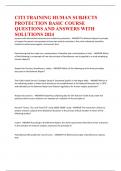Summary
Summary Everything for Theories on Innovative and Sustainable Regions (book, articles, lectures and discussions)
- Course
- Institution
- Book
This document includes everything for Theories on Innovative and Sustainable Regions (GEO2-7012) : the book, all the articles, the content of all 4 lectures, the content of the discussions in class and the explanations/comments from the classes.
[Show more]













